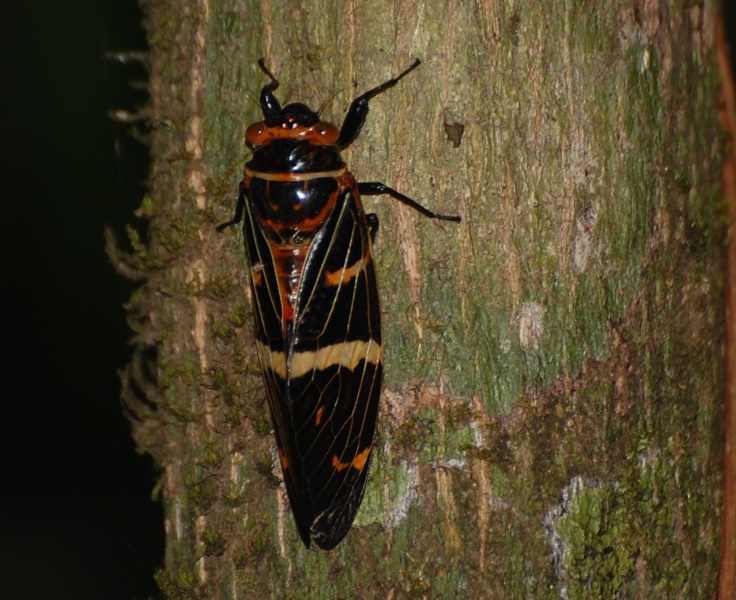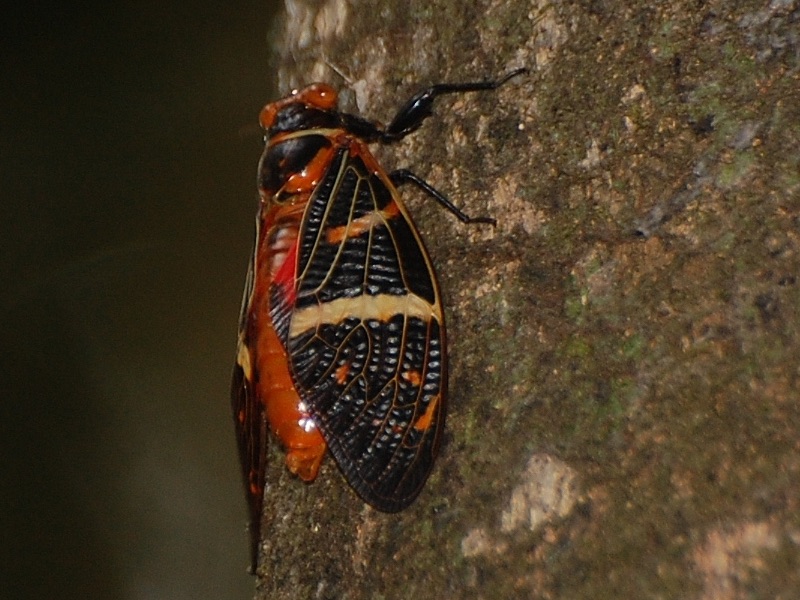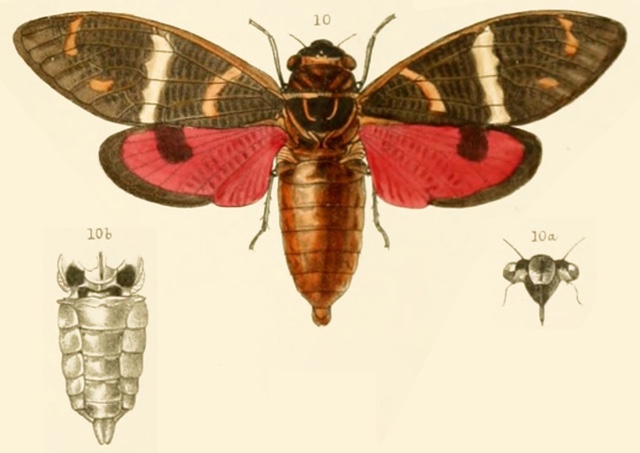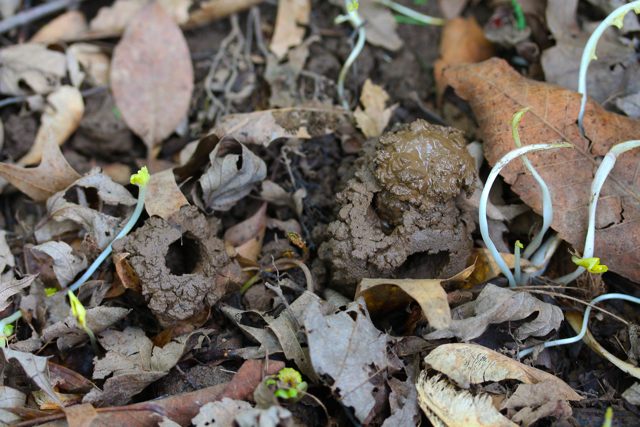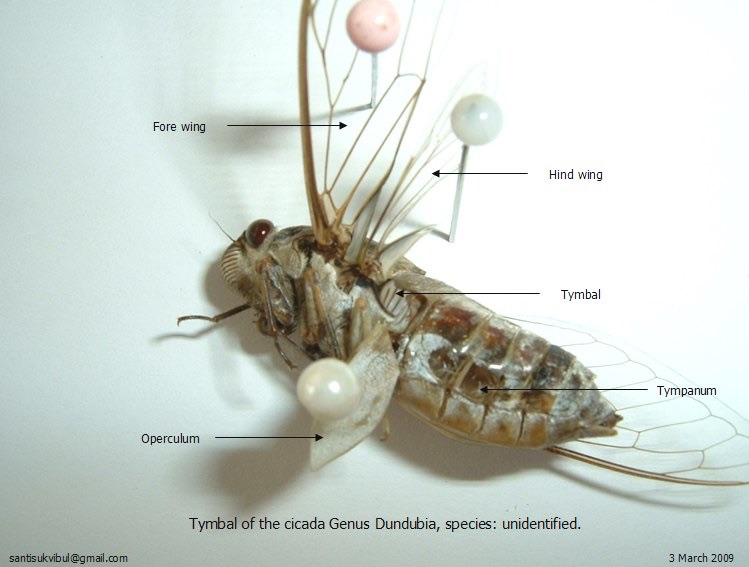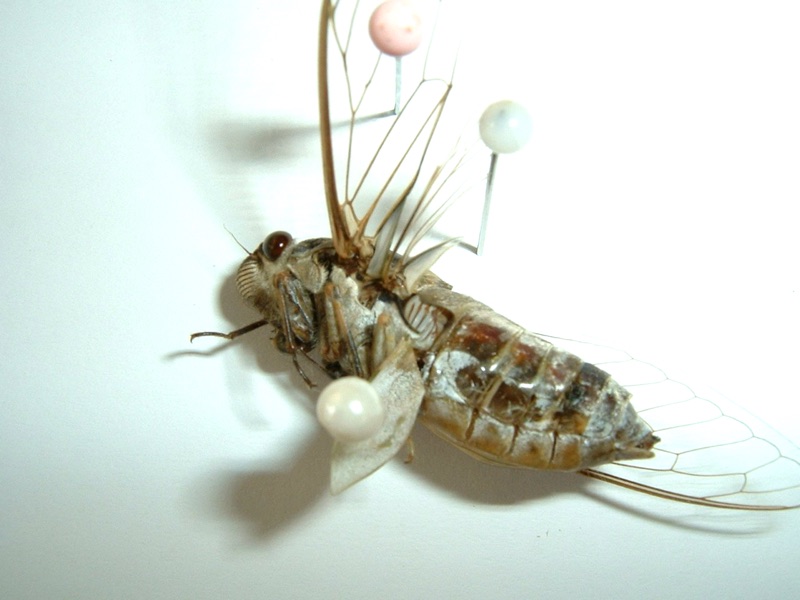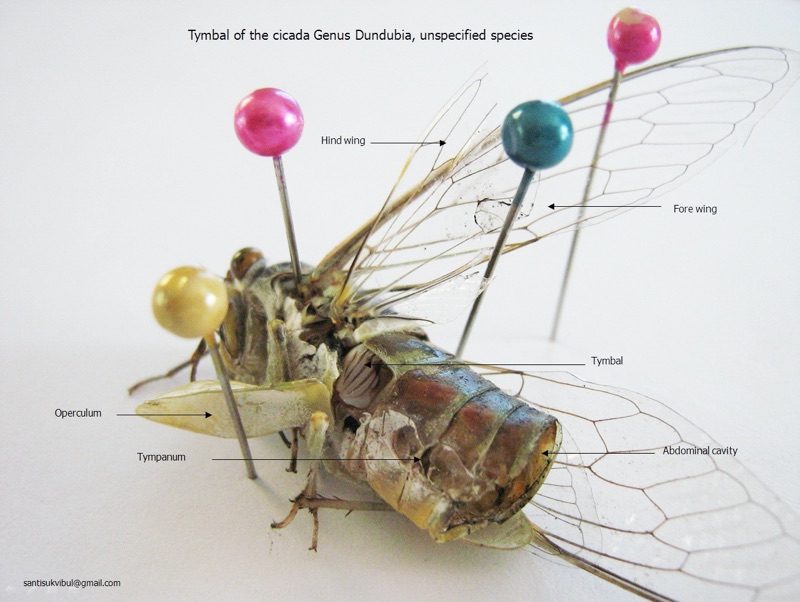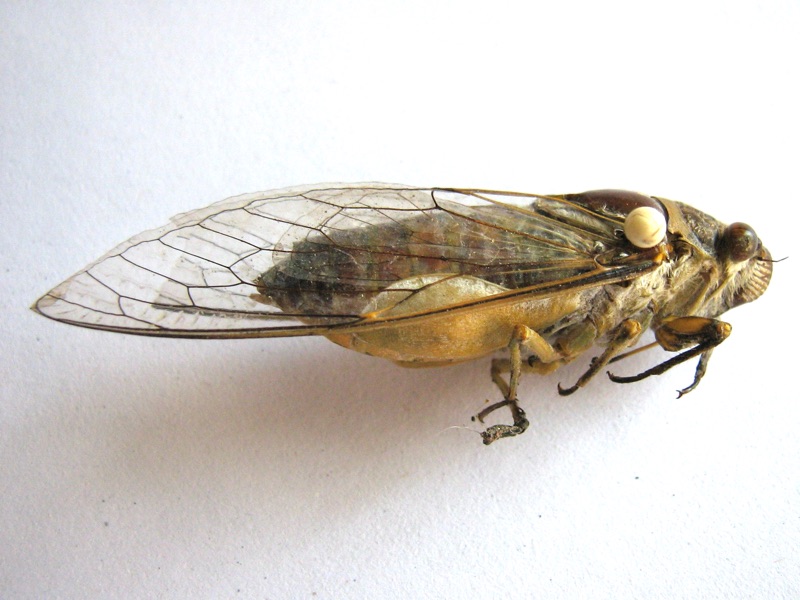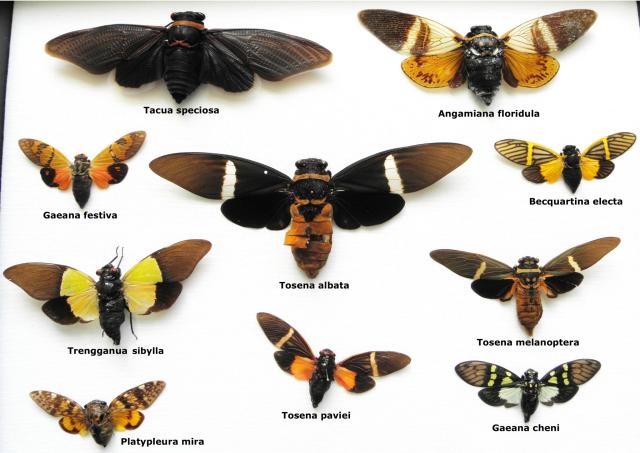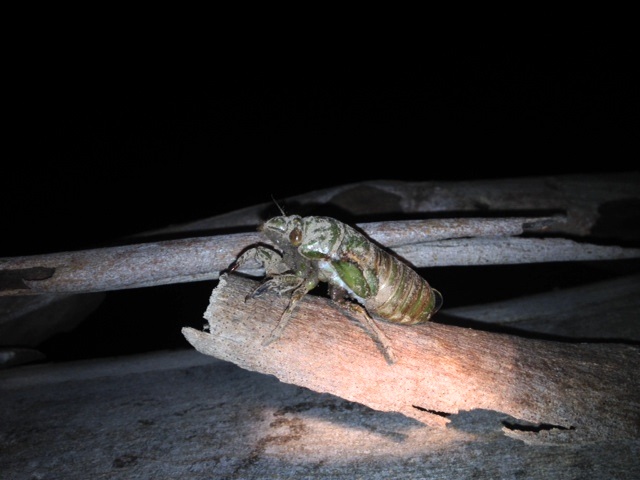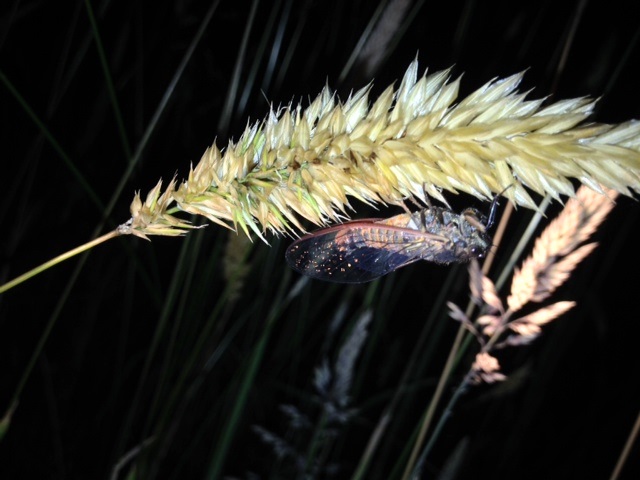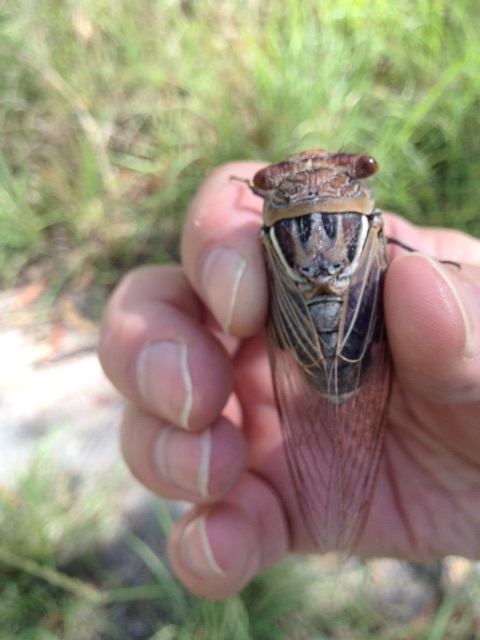Magicicadas with a 13-Year life-cycle are emerging in Ohio & Kentucky, along the Ohio river, in 2014. This particular group of periodical cicadas last emerged in 2001 and 1988.
July 17th: I got confirmation from Dave Marshall and John Cooley that the ‘decim in the brood are Magicicada tredecim!
June 5th: Roy Troutman and I completed 3 days of cicada mapping in Ohio and Kentucky. This map includes our findings, Gene Kritsky’s findings and sightings submitted to Gene from local residents.
June 4th: Audio of a Magicicada tredecula call from the Ohio/Kentucky brood.
June 3rd: I spent the last last two days looking for cicadas in Ohio and Kentucky with Roy Troutman. Mostly ‘cassini, some ‘decula, and a very small amount of ‘decims. We found ‘cassini chorusing in Mason, KY, in the west, and so far as south as Neurls Run, KY. JoAnn White & Monte Lloyd’s paper 17-Year cicadas emerging after 18 years: A new brood?1 mentioned emergences in the Mason location, going back to 1975 (three 13 year generations ago).
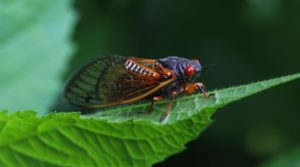
May 31th: Cicadas are reported to be “loud and plentiful” in the Germantown KY area, as well as, Harrison county KY.
May 30th: Roy Troutman confirmed that ‘decula, ‘cassini and ‘decim type Magicicada have emerged in Ohio.
May 23th: Gene Kritsky wrote to let us know that “the emergence is now in full swing” in Ohio and Kentucky.
May 15th: Roy Troutman sent us a set of photos from Crooked Run Nature Preserve in Chilo, Ohio.
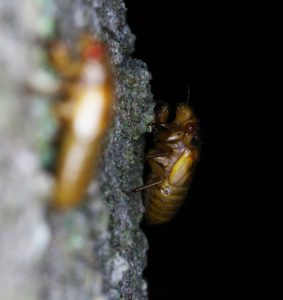
May 14th: Roy Troutman has reported that the emergence began last night in Chilo, OH according to a Clermont County Parks director. Cool weather this week (in the thirties!) will likely prevent more cicadas from emerging until next week (highs in 80s).
April 30th: Scientists ask for public’s help verifying cicadas hidden brood. Note: if you send your photos in to Dr. Kritsky, make sure Geo-Tag (Android) or Camera Location Services (iPhone) is turned on.
April 28th: Roy Troutman discovered cicada turrets, confirming the 2014 emergence of these cicadas.
More:
I know what you’re thinking: are these cicadas part of Brood XXII? Time and research will tell. Brood XXII emerges in Louisiana and Mississippi, which are geographically isolated from Ohio & Kentucky, so the two groups of cicadas are likely to be genetically distinct (belonging to different mitochondrial haplotype groups at least). That said, Brood II, which emerges mostly along the east coast of the U.S., also emerges in Oklahoma, which is geographically isolated from the rest of that brood. So, the Ohio/Kentucky cicadas could logically be part of brood XXII.
Back in 2001 Roy Troutman, Les Daniels and Gene Kritsky reported this group of cicadas to Cicada Mania. Les reported both cassini and decim.
My guess is these cicadas are somehow descended from Brood X or Brood XIV 17-year cicadas, and that if they are 13-year cicadas.
I wrote Roy for a list of towns where these cicadas emerged in 2001, and he said:
Chilo, OH
Cold Springs, KY
Higginsport, OH
Neville, OH
New Richmond, OH
Point Pleasant, OH
Ripley, OH
Utopia, OH
Woodland Mound Park, Cinncinati, OH
View OH/KY 13 Year Brood in a larger map
Check out the paper 1 White, J., and M. Lloyd. 1979. 17-Year cicadas emerging after 18 years: A new brood? Evolution 33:1193-1199. It was the first to document this odd brood of cicadas, although it did not mention the 13 year periodicity.
